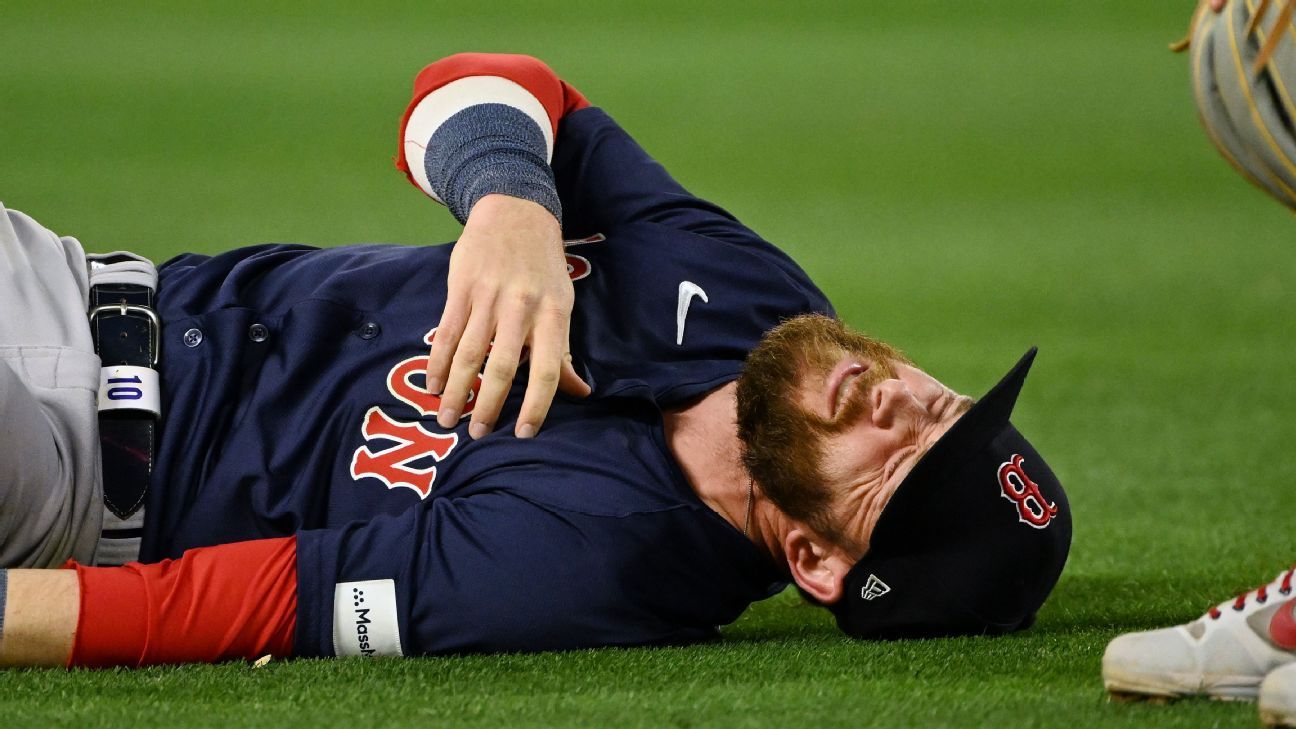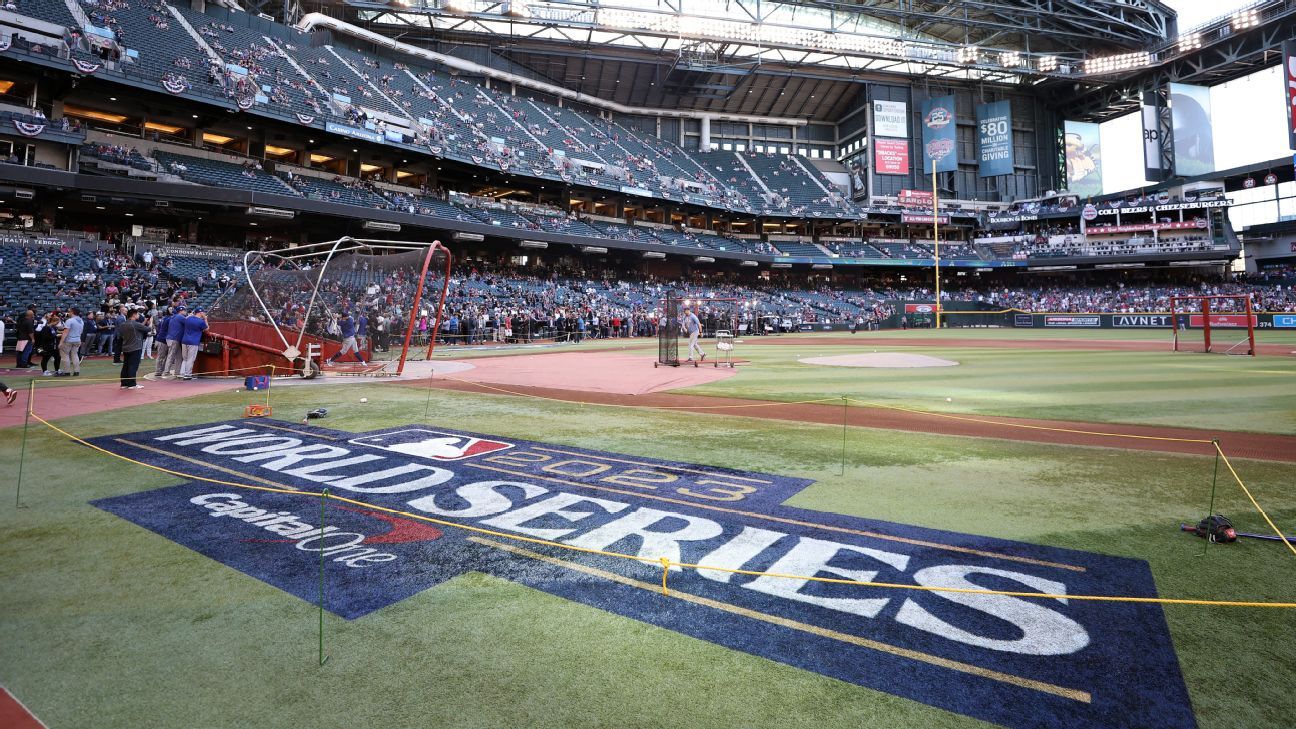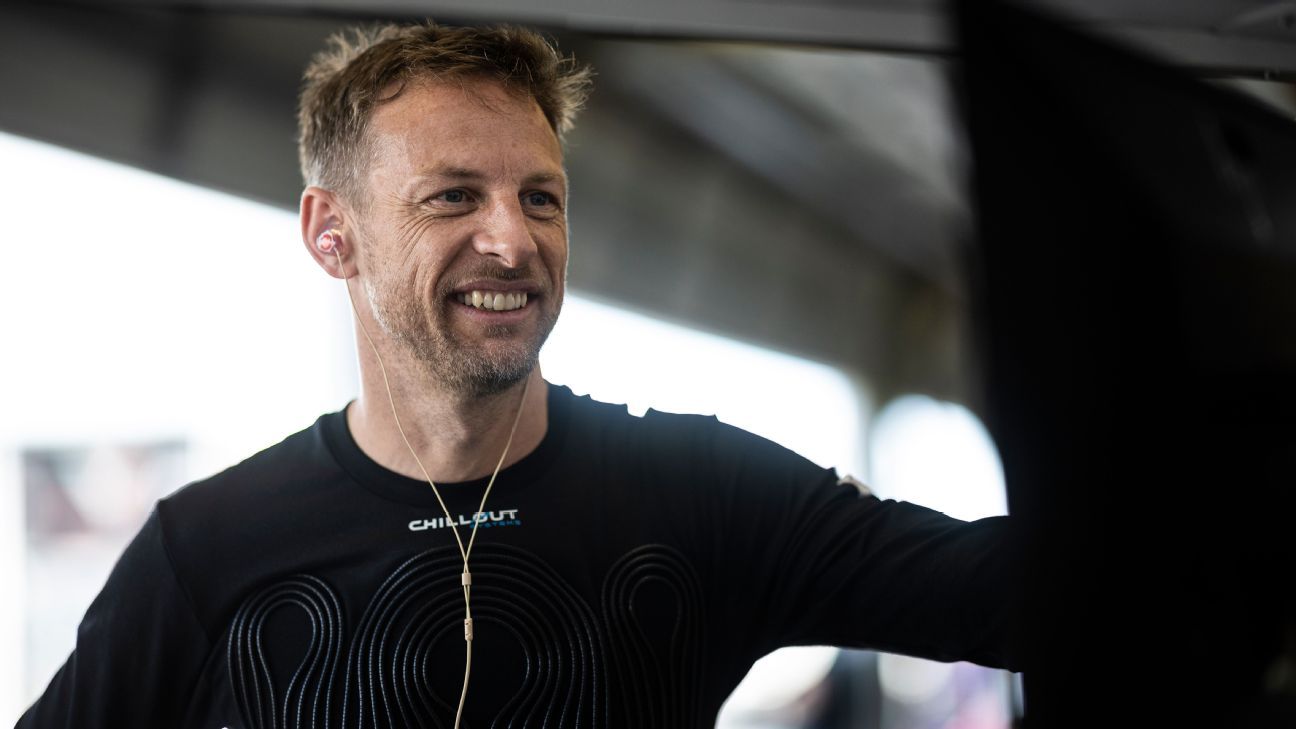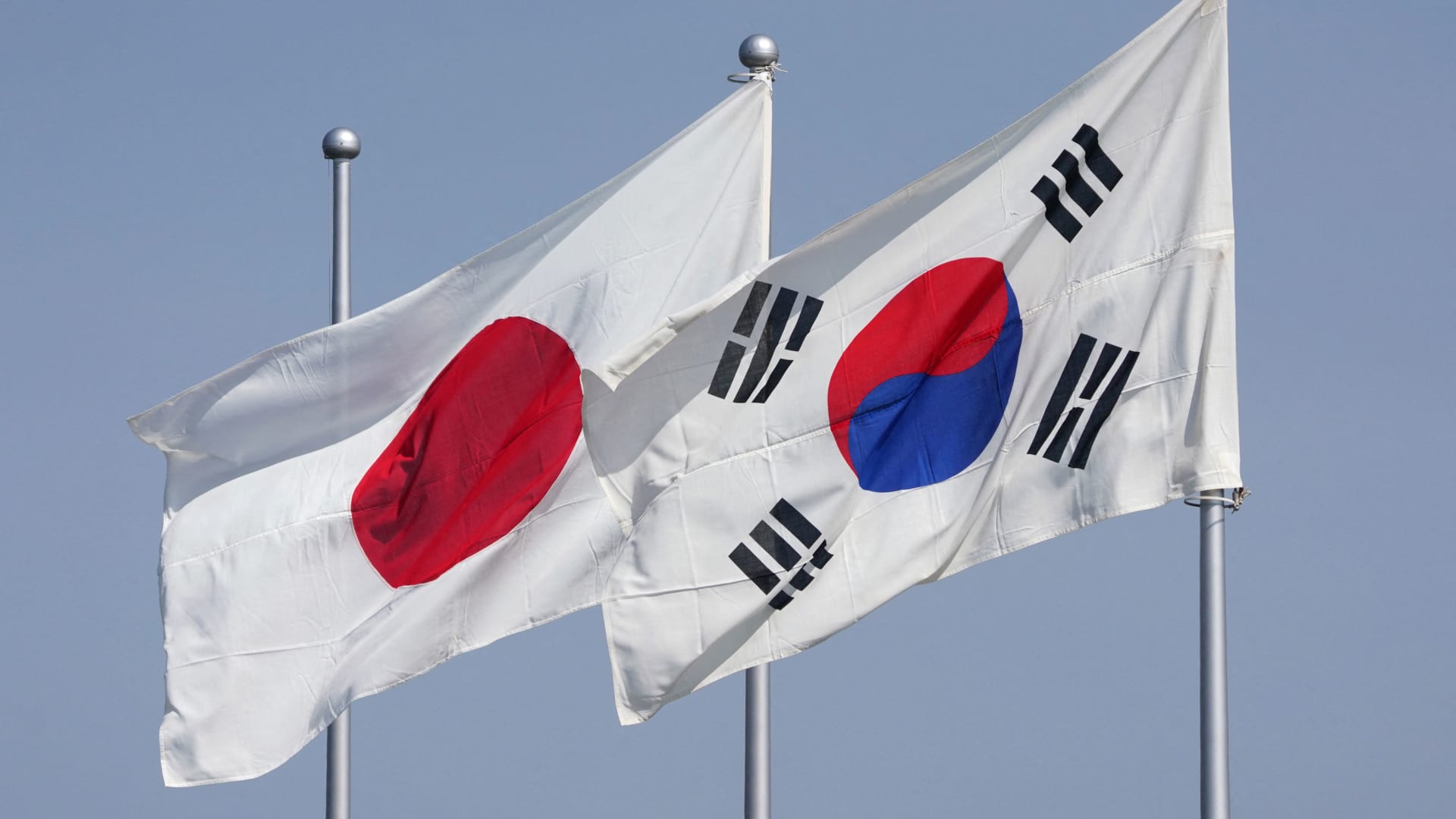In the latest news released as part of its impact report, Tesla claims that its battery packs lose only about 10% of their energy capacity after 200,000 miles.
Battery degradation, which represents the loss in capacity and range over time with increasing mileage, is one of the biggest concerns of new electric vehicle buyers.
It’s also an important part of the equation to make electric cars more sustainable.
The longer a battery pack can be in operation, the longer it will keep itself from being scrapped for recycling and the longer it can keep the whole car in operation.
Tesla has sporadically released some data about its battery degradation over the years.
This year, it updated stats from its Model S and Model X fleet, and it claims a battery capacity retention of roughly 90% after 200,000 miles:
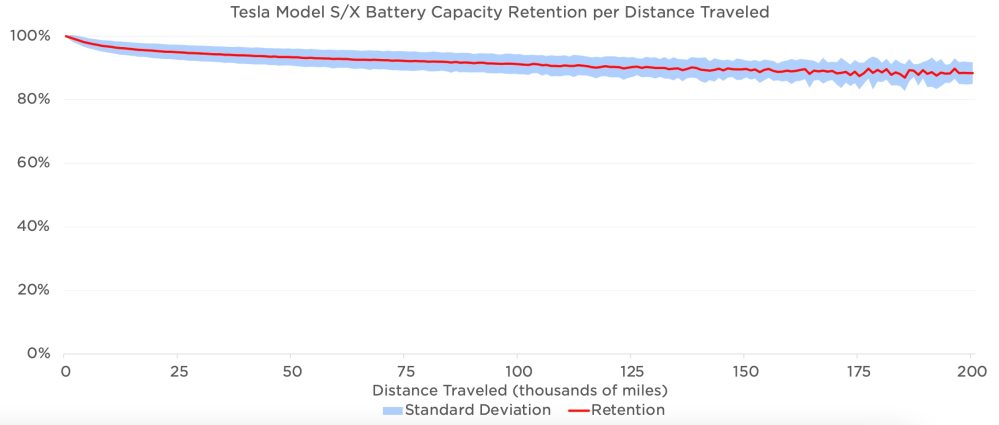
The data also confirms real-world reports that the degradation is steeper for the first 100,000 miles and then it slows down and stabilizes for the next 100,000 miles.
Tesla believes that 200,000 miles is when its vehicles get scrapped on average:
“Tesla’s battery packs are designed to outlast the vehicle. We estimate that a vehicle gets scrapped after approximately 200,000 miles of usage in the U.S. and roughly 150,000 miles in Europe.”
The data is only for Model S and Model X, which have been around for longer, but Tesla claims that the Model 3 battery packs are made to last 500,000 miles and the automaker aims for its next generation of batteries to last 1 million miles.
Not all packs are created equal
For Model S and Model X, Tesla has had quite a few different battery packs over the years and there are not all as good to retain energy capacity.
Last year, we reported on a leak of data that enabled us to get a very precise look at the difference between Tesla’s 90 kWh and 85 kWh pack.
It showed that the 90 kWh would lose battery capacity much faster than the 85 kWh pack:
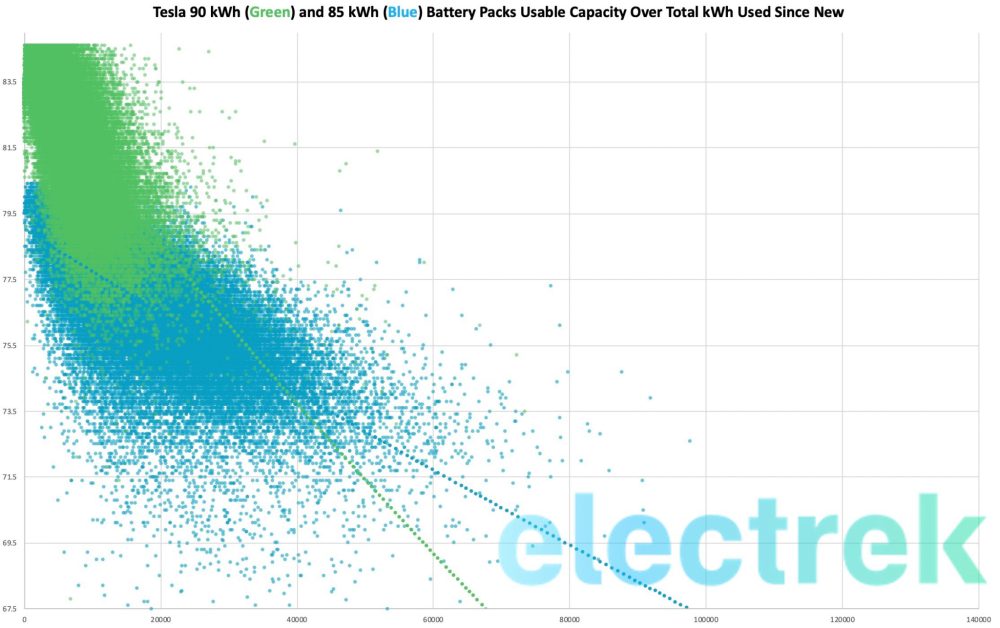
Each point on this chart represents a Model S or Model X in Tesla’s customer fleet at the end of 2017. We have tens of thousands of data points directly from Tesla, which is arguably the best data ever released about Tesla battery degradation.
The ‘Y’ axis represents the current usable battery capacity of the car in kWh pulled from Tesla’s own battery management system and the ‘X’ axis is the total use of the battery pack in kWh since the vehicle was new.
It shows that the 90 kWh battery pack (green) starts at ~85 kWh of usable capacity and drops on average by about 6 kWh after 20,000 kWh or 235 cycles, which should represent over 60,000 miles.
As fo the 85 kWh battery pack, it starts with a usable capacity of about 80.5 kWh and it drops on average to about 77 kWh after 20,000 kWh.
It means that for the first few years of use, the 90 kWh battery pack degrades almost twice as fast as the older 85 kWh battery pack.
The good news is that the steeper degradation in the 90 kWh battery packs also appears to temper off over time and mileage.
A Tesla Model X with over 400,000 miles
As some of you may know, I have experience with high-mileage electric cars, especially high-mileage Tesla vehicles.
Last year, I bought one of the cheapest and most high-mileage Tesla Model X vehicles ever.
With over 400,000 miles (650,000 km), it’s one of the highest-mileage electric vehicles in the world and serves as a great case study for the longevity of electric cars, in general, and Tesla vehicles in particular.
We previously reported on battery degradation on the extremely high-mileage vehicle.
It’s a Model X 90D, which when new had an EPA rating of 257 miles (414 km).
Today, it gets about 230 miles (370 km) on a full charge, which means a 10.5% degradation in battery capacity.
However, this Model X got a battery replacement under warranty at 317,000 miles. That’s more than half a million kilometers.
Interestingly, the original battery pack wasn’t replaced due to battery degradation but because of an even greater problem with the pack.
Once the state-of-charge would reach around 40%, which normally would mean just over 90 miles of range, the capacity would quickly drop to 0.
Tesla replaced the battery pack under warranty. It’s quite impressive that it lasted for over 300,000 miles before failing.
Now the second battery pack on this Model X has almost 100,000 miles (160,000 km) on it and as previously mentioned, it is seeing a roughly 10% battery degradation.
Subscribe to Electrek on YouTube for exclusive videos and subscribe to the podcast.







